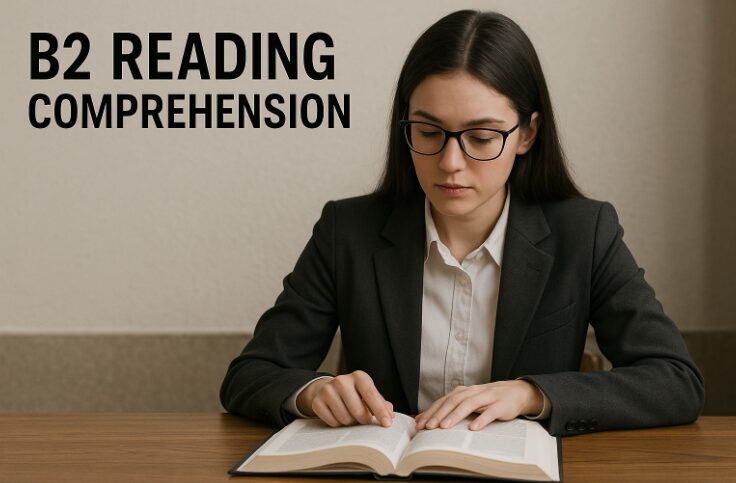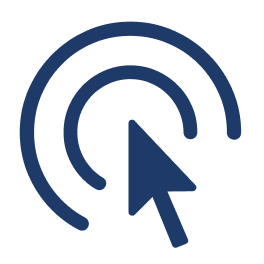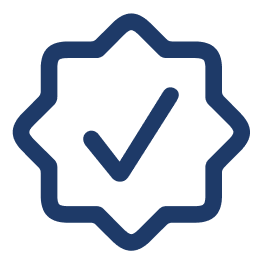Understanding the B2 Reading Comprehension Level
What is B2 Level Reading?
B2 reading comprehension refers to the upper-intermediate level according to the Common European Framework of Reference for Languages (CEFR). At this stage, learners can understand the main ideas of complex texts, both on concrete and abstract topics, including technical discussions in their field of specialization. Readers can also interact with a degree of fluency and spontaneity that makes regular interaction with native speakers quite possible without strain.

CEFR and B2 Standards Explained
The CEFR categorizes language proficiency from A1 (beginner) to C2 (proficient). B2 lies between intermediate and advanced, requiring readers to handle a variety of reading materials, including academic articles, newspapers, and reports, using both inferencing and detailed reading skills.
Why B2 Reading Comprehension is Crucial
Academic Importance
Strong reading comprehension skills at the B2 level are crucial for succeeding in university-level courses, where students are expected to analyze and critique a wide range of texts.
Real-world Applications
Outside of academics, B2 reading skills are invaluable in the workplace and everyday life. Understanding contracts, business communications, news articles, and online content becomes easier and faster.
Key Skills Required for B2 Reading Mastery
What’s your English level?
Discover your level now: A1/A2/B1/B2/C1/C2 and GET your certificate!
Vocabulary Range and Usage
A wide-ranging vocabulary allows readers to grasp complex ideas without needing a dictionary. Mastery of synonyms, collocations, and idiomatic expressions is essential.
Grammatical Accuracy
At B2 level, recognizing subtle grammatical structures (like conditionals, modals, and passive voice) aids in better understanding the nuances of texts.
Common Text Types at B2 B2 Reading Comprehension Level
Articles and Essays
These often present arguments, opinions, and discussions on societal, cultural, or technical topics.
Reports and Reviews
Reports provide factual, structured information while reviews offer subjective opinions on books, films, or products.
Narratives and Descriptive Texts
Storytelling and descriptive passages require readers to track timelines, emotional tones, and detailed imagery.
Effective Strategies for B2 Reading Comprehension
Skimming and Scanning Techniques
- Skimming involves reading quickly to grasp the general idea.
- Scanning is used to find specific information without reading everything word-for-word.
Predicting Content from Titles and Headings
Making educated guesses about content based on headings, subheadings, and visual aids boosts comprehension and focus.
Building Vocabulary for B2 Reading Success
Context Clues Strategy
Learning to deduce the meaning of unfamiliar words from the surrounding text reduces dependency on dictionaries.
Word Formation Techniques
Understanding prefixes, suffixes, and roots helps in figuring out meanings of unfamiliar words quickly.
Enhancing Reading Speed and Retention
Timed Practice Sessions
Practicing under time constraints simulates exam conditions and trains the brain to process information faster.
Active Reading Tips
Marking main ideas, annotating margins, and summarizing passages enhances retention and deepens understanding.
How to Tackle Different Question Types
Multiple Choice
When facing multiple-choice questions, it’s essential to read all the options carefully before selecting an answer. Eliminate the clearly wrong choices first, then focus on the subtle differences between the remaining options.
True/False/Not Given
For these questions, base your answers strictly on the text. If the information is not explicitly mentioned, the correct answer is “Not Given.” Avoid making assumptions based on your own knowledge.
Matching Headings
Matching headings to paragraphs requires an understanding of the main idea of each paragraph. Skim for general meaning first, then match carefully, noting keywords and repeated ideas.
Common Challenges in B2 Reading Comprehension
Dealing with Complex Sentences
Long sentences packed with clauses can be intimidating. Break them down mentally into smaller parts and look for connectors like “although,” “however,” and “because” to understand relationships between ideas.
Understanding Implicit Meaning
Often, the text implies information rather than stating it outright. Practice reading between the lines, looking for hints in word choice, tone, and structure.
Top Resources for B2 Reading Comprehension Practice
Best Online Platforms
Websites like BBC Learning English, Cambridge English, and Breaking News English provide free and graded reading materials perfect for B2 learners.
Recommended Books and Magazines
- “English Vocabulary in Use (Upper-Intermediate)” by Cambridge
- “The Economist” (simplified articles for learners)
- “National Geographic Learning” series
These resources expose readers to real-world language use while offering appropriate challenges.
Sample B2 Reading Comprehension Exercise
Short Passage:
“As cities continue to grow, urban green spaces have become essential for maintaining biodiversity and providing residents with recreational areas. Studies show that access to parks and gardens improves mental health, encouraging exercise and social interaction.”
Example Questions:
- What are two benefits of urban green spaces mentioned in the text?
- True or False: Urban green spaces only help maintain biodiversity.
- Which activity is encouraged by access to parks?
Answers:
- Maintaining biodiversity and providing recreational areas.
- False
- Exercise
How to Self-Assess Your Progress
Setting SMART Goals
Set Specific, Measurable, Achievable, Relevant, and Time-bound goals for your reading practice. For instance, “Read two B2-level articles and answer comprehension questions three times a week.”
Using CEFR Descriptors
Regularly refer to CEFR descriptors to check whether you meet B2 expectations. These descriptors focus on understanding main ideas, recognizing viewpoints, and summarizing texts.
Tips for Teachers Supporting B2 Reading Comprehension Students
Lesson Planning Ideas
Incorporate authentic materials like news articles, advertisements, and emails into lessons. Focus on tasks like summarizing, discussing, and inferring.
Interactive Activities
Engage students through:
- Group discussions on articles
- Reading-based roleplays
- “Find someone who…” reading scavenger hunts
Real-Life Benefits of Strong B2 Reading Skills
Studying Abroad
Many universities require a minimum B2 level for admission. Strong reading skills ensure success in understanding lectures, textbooks, and research papers.
Career Advancement
In the workplace, excellent reading comprehension at the B2 level leads to better job opportunities, especially in multinational companies where English is the working language.
Common Mistakes to Avoid
Over-reliance on Translation
Constantly translating every word slows down reading and hampers comprehension. Train yourself to think directly in English.
Ignoring Text Structure
Understanding how texts are organized (introduction, body, conclusion) helps anticipate the flow of ideas and improves comprehension.
FAQs About B2 Reading Comprehension
Q1. What types of texts should I practice with at the B2 level?
A1. Focus on articles, essays, reviews, and short stories from reputable sources like BBC, National Geographic, and academic journals.
Q2. How long should I practice reading each day?
A2. At least 30 minutes of focused practice daily is recommended to steadily improve your B2 reading skills.
Q3. What’s the best way to learn new vocabulary?
A3. Learn words in context, use flashcards with example sentences, and apply new words in writing and speaking activities.
Q4. How can I improve my reading speed without losing comprehension?
A4. Practice skimming for general ideas and scanning for specific information regularly to build speed and efficiency.
Q5. Should I read aloud when practicing?
A5. Occasionally reading aloud can help with pronunciation and rhythm, but focus primarily on silent reading to simulate real-life comprehension tasks.
Q6. How do I know I’m ready to move from B2 to C1?
A6. When you can understand a wide range of demanding texts, infer implicit meaning, and summarize complex information without much difficulty, you’re ready for C1!
Conclusion: Your Path to B2 Reading Success
Mastering B2 reading comprehension is a journey that demands persistence, smart strategies, and the right resources. By following the techniques outlined in this guide — from improving vocabulary and speed to tackling different question types — you’ll be well on your way to achieving confident, fluent reading skills. Whether your goal is academic success, career advancement, or personal enrichment, strong reading comprehension will open countless doors. Keep practicing, stay curious, and remember: every page you read takes you one step closer to mastery!





